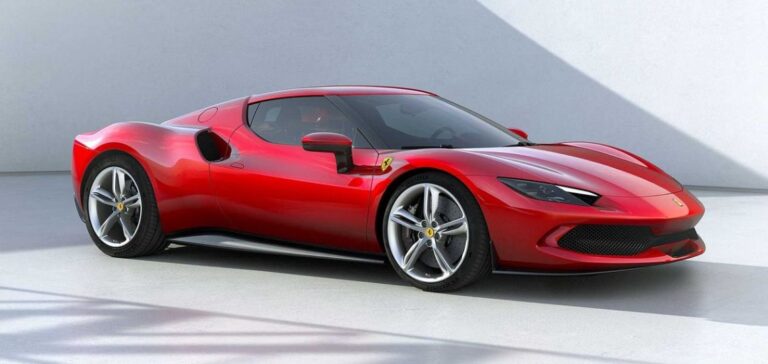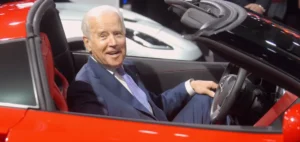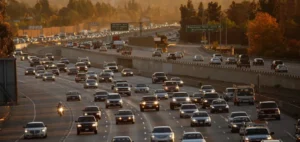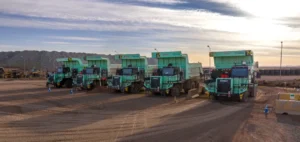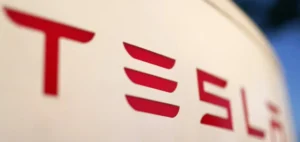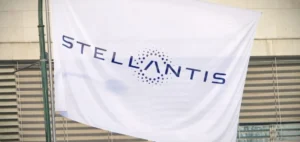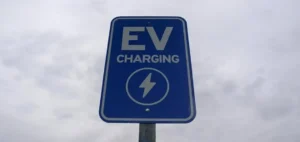Ferrari has unveiled its new model, the 296 Speciale, a hybrid berlinetta designed to push the limits of the mid-rear engine sports car segment. With a combined powertrain of 880 hp and a weight reduction of 60 kg compared to the 296 GTB, the Maranello manufacturer aims to set new standards in road performance. The 20% increase in aerodynamic downforce compared to the previous model enhances the car’s capabilities in fast corners.
An optimised V6 engine for performance
The heart of the 296 Speciale is a 2992 cm³ 120° V6 twin-turbo engine, combined with an electric motor located between the combustion engine and the eight-speed dual-clutch gearbox. The system delivers 880 hp, 50 hp more than the 296 GTB, thanks notably to the use of titanium connecting rods, reinforced pistons, and a boost strategy inspired by Formula 1.
Thermal power reaches 700 hp at 8000 rpm, setting a new specific record of 234 hp/l for this category. In parallel, the electric motor offers an “extra boost” mode allowing an additional 180 hp to be delivered over a short period to maximise track performance.
Aerodynamic innovations inspired by motorsport
The 296 Speciale generates 435 kg of downforce at 250 km/h, notably through a new aerodynamic damping device and vertical fins integrated into the rear bumper. An improved active spoiler halves the transition time between low and high downforce configurations. Ferrari has also introduced a medium downforce configuration, further improving high-speed stability.
The 60 kg weight reduction was achieved through extensive use of carbon fibre for the bodywork and titanium for certain engine components. The resulting power-to-weight ratio stands at 1.60 kg/hp, a record for a rear-wheel-drive Ferrari berlinetta.
A stripped-down interior dedicated to performance
Inside, Ferrari opted for a minimalist approach with extensive use of carbon fibre and Alcantara©. The monobloc door panels and the carbon fibre centre console aim to lighten the ensemble while highlighting functional elements such as the “shift gate” inspired by the brand’s historic models.
The infotainment system maintains an essential-focused approach, reinforcing the connection between driver and car. A dedicated indicator on the dashboard allows real-time tracking of the “extra boost” function’s availability.
Onboard technologies for dynamics and thermal management
The 296 Speciale is equipped with the ABS Evo dynamic control system, enhancing braking precision in all conditions. Brake and engine cooling have been optimised through new ducts and aerodynamic solutions derived from the 296 Challenge model, reducing critical zone temperatures without increasing radiator size.
The Michelin Pilot Sport Cup2 tyres, developed specifically for this model, offer better lateral stiffness and quicker response to inputs, contributing to improved performance on both track and open road.
Hybrid strategy and dedicated driving modes
The hybrid system of the 296 Speciale allows for an electric-only range of 25 km thanks to a 7.45 kWh battery installed under the floor. Four driving modes are available via the eManettino: eDrive, Hybrid, Performance, and Qualify. The latter fully exploits the potential of the electric motor to provide optimal power boosts for track use.
With a top speed exceeding 330 km/h and an acceleration from 0 to 100 km/h in 2.8 seconds, the 296 Speciale establishes itself as the fastest hybrid berlinetta ever produced by Ferrari.


